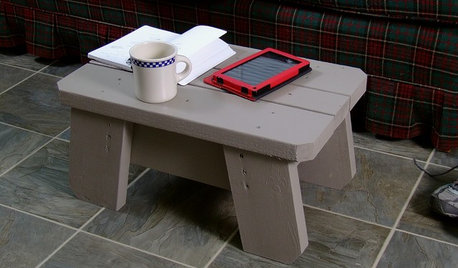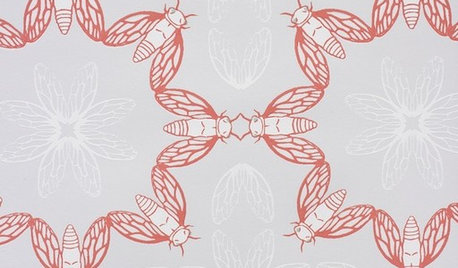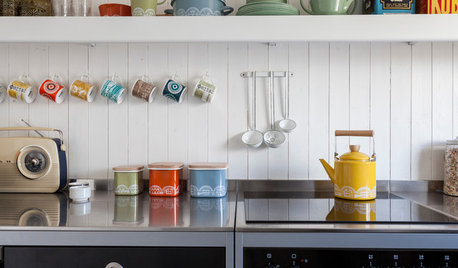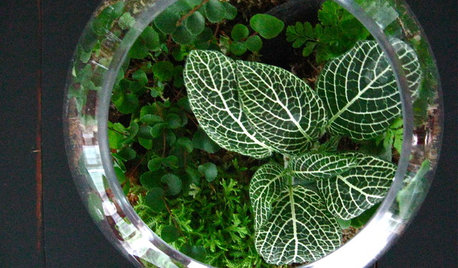How do you make mini-bins out of coffee cans
mywormsmypets
15 years ago
Related Stories

GARDENING GUIDESHouzz TV: Make a Worm Bin for Rich Soil and Happy Plants
A worm-powered compost bin that can fit under a sink turns food scraps into a powerful amendment for your garden. Here’s how to make one
Full Story
FEEL-GOOD HOMEThe Question That Can Make You Love Your Home More
Change your relationship with your house for the better by focusing on the answer to something designers often ask
Full Story
DIY PROJECTSNeat Little Project: Make an All-in-One Stool, Mini Table and Ottoman
One piece, at least 3 uses. Plus, you can vary the measurements of this sturdy wooden stool to make it just the right size for you
Full Story
MORE ROOMSMini Guide to Minimalism
A minimalist approach can make the most out of your space by focusing attention exactly where you want. These 12 rooms show you how
Full Story
PRODUCT PICKSGuest Picks: Decor to Make Your Eyes Bug Out
Insects are marching to a different tune these days, showing up on knobs, teapots and even tablecloths
Full Story
BATHROOM MAKEOVERSMini Bathroom Makeovers You Can Conquer in a Weekend
Perk up your tired-looking bathroom with these simple styling tricks
Full Story
LIFEHow Do You Make Your Tea and Coffee in the Morning?
A morning cup is a must for many, and preparation comes in many guises. We look at coffee and tea habits across the Houzz community
Full Story
LAUNDRY ROOMSThe Cure for Houzz Envy: Laundry Room Touches Anyone Can Do
Make fluffing and folding more enjoyable by borrowing these ideas from beautifully designed laundry rooms
Full Story
BEDROOMS7 Ways to Make a Small Bedroom Look Bigger and Work Better
Max out on comfort and function in a mini space with built-ins, wall mounts and decorating tricks that fool the eye
Full Story
HOUSEPLANTSGardens Under Glass: How to Make Your Own Terrarium
Be the master of a mini ecosystem indoors — the low-maintenance, highly rewarding kind that fits any room
Full StoryMore Discussions






lkittle
eric30
Related Professionals
Concord Landscape Contractors · Bethel Park Landscape Contractors · Cary Landscape Contractors · Florham Park Landscape Contractors · Fort Payne Landscape Contractors · Fuquay-Varina Landscape Contractors · Melrose Landscape Contractors · Mission Landscape Contractors · St. Louis Landscape Contractors · Teaneck Landscape Contractors · Tigard Landscape Contractors · Aurora General Contractors · Champaign General Contractors · Lighthouse Point General Contractors · Mashpee General Contractorsgeneccs
eric30
Jasdip
mndtrp
lkittle
lkittle
lkittle
mywormsmypetsOriginal Author
folly_grows
choxie
wormnelly
URgency
arizona_wormer
Jasdip
Joyousfree
arizona_wormer
Jasdip
pskvorc